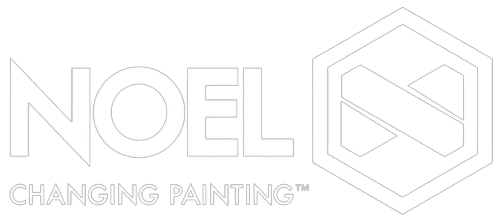Are you a DIY painter? Have you completed multiple painting projects? Are you pretty confident in your painting abilities? Well, unless you have followed all pertinent steps, you may be making some common interior painting mistakes that you aren’t even aware of.
Here are the some of the most common interior painting mistakes that everyone has made at one time or another.
Choosing Low Quality Applicators
Paint can be expensive! Many people try to save some money by purchasing the cheapest paint brushes and rollers. This is a big mistake as you will not get anywhere close to the professional results you desire. Cheap applicators can cause paint to clump as well as leave behind lint in the paint. Investing in the proper tool will end up saving you trouble and money in the long run as you won’t have to redo your paint job.
Understanding the Amount of Paint Needed to Get the Job Done
Before buying your paint, estimate how much you will need. One gallon covers about 400 square feet. If you aren’t sure, measure the wall and speak with the professionals at the hardware store. Always ensure you get a quarter to half a gallon extra for touch-ups, etc. Underestimating the amount of paint will make you run back to the hardware store, which is always a pain. Also, the paint may not be the exact shade as your current hue.
Improper Preparation
- Repair wall first: If there are imperfections or holes in your wall, you will want to do the repair work before painting. You want to ensure your walls are smooth, dry, and clean.
- Use painter’s tape: Ensure you apply painter’s tape, not masking tape, around door frames, window sills, baseboards, trim, etc. Really anywhere you want clean edges, use painter’s tape. Not using tape will leave you with a sloppy mess and unkempt lines.
- Cover and protect surroundings: Cover doorknobs, light fixtures, any furniture that couldn’t be removed, and anything that you don’t want paint on. Before even opening the can of paint, remove wall plates and cover the entire floor with a drop cloth. Trust us, it’s worth not having to scrub paint off of floors later.
Lock Pets Out of Paint Zone
Pets want to be near their owners and aren’t usually aware of paint can lids or paint dishes. They easily step in one and the next thing you know, there are paw prints all over your floor and carpet. Dogs also love things they can chew on… this could easily include a paint brush.
Use a Primer
In what condition is the area that you are painting? If it isn’t already covered by smooth paint, has stains, or is a darker color than what you are about to apply, we recommend applying primer on its own before beginning the painting. If the area is in great condition, using a two-in-one paint/primer mixture will suffice. Primer preps the area to allow paint to stick easily and ensures the true color of the paint you are applying shines through. DO NOT SKIP THIS STEP!
Proper Paint Brush / Roller Use
Ensure that you are paying attention to the tools you are using. Do not dunk your paintbrush all the way into the paint. The paint will dry in the brushes making cleaning the brush harder and your painting job messier, as the clumps can get stuck in the paint on the wall. Only dip the brush about a third of the way into the can. Also, ensure that you don’t dunk the roller in the paint for the same reason. Lastly, do not let any of your brushes get close to the floor! Paint is a magnet for dirt and dog hair. Ensure that you keep your brushes clean so that these don’t get mixed into your paint.
Applying a Second Coat too Soon
We want things done in a timely fashion and prevent any interior painting mistakes.. We are impatient; however, not waiting for that prior coat before adding the second one will mess everything up! It will cause visible brush strokes, paint pulling off, etc. A good rule of thumb is to allow 24 hours between coats.
Failing to Keep Touch-up Paint / Letting Touch-up Paint Dry Out
Accidents are bound to happen. Save some extra paint in the can so that when you need to touch-up, you will be set! Touch-up paint easily dries out. Don’t let that happen! If the paint is water-based, cover the top of the can with clear plastic wrap before sealing it. For oil-based paints, add a half-inch of water to the surface before sealing it. These are all steps to ensure there are not interior painting mistakes.
Contact the Ft Myers painting professionals from Noel Painting to learn more about our residential painting services!






